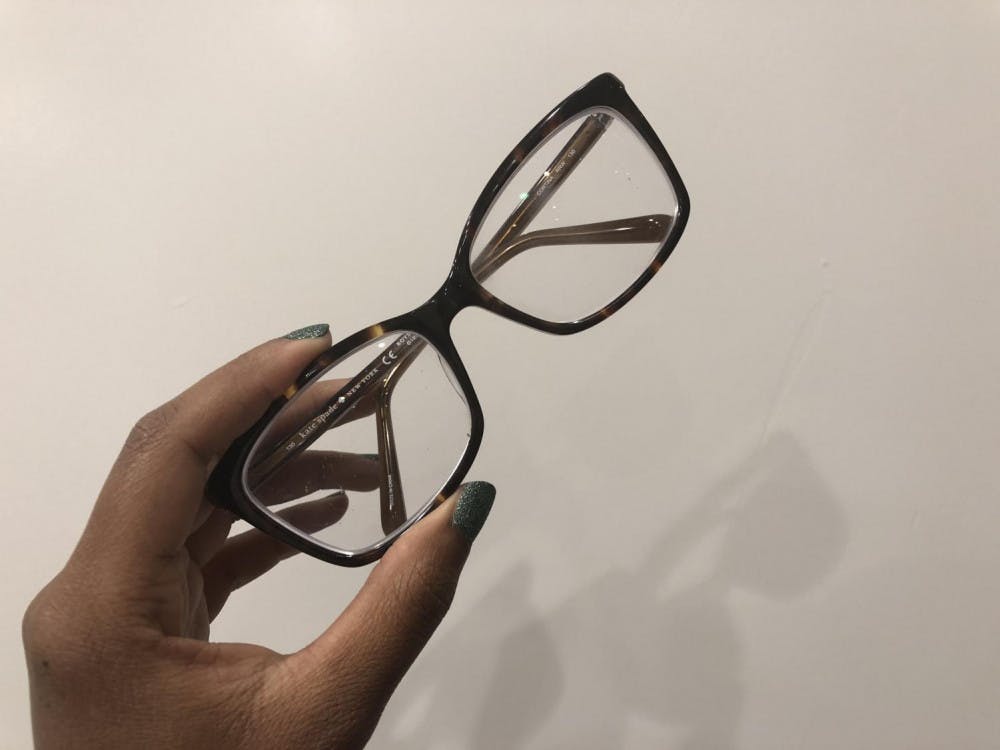This past summer, I purchased a new pair of prescription glasses from Vision Works. I got a pair of dark brown Kate Spade glasses which were square-shaped and tortoise-patterned. This was the first pair of glasses I bought since switching to contacts in high school, so I was excited to get something new and more mature.
I paid for the glasses using the money I had earned interning in Boston this summer. This was the first time I, and not my parents, paid the couple hundred dollars for the frames and prescription lenses. It wasn’t until it was time to pay and I heard the price, that I began to wonder why prescription glasses are so expensive.
The first time I failed a vision test and realized I would need to get glasses, I was in the third grade. I felt ashamed and weirded out by the idea of needing help to see, something that all the other kids seemed to have no problem doing. Over the years, my glasses became a part of my identity and I haven’t thought much about my vision since.
However, I have thought about how expensive and time consuming having a visual aid can be. Nowadays, glasses are deemed a fashion accessory and you can find a stylish but fake pair at almost any clothing store. I find it comical walking into these stores and seeing “fashion glasses” for people who do not need glasses but want to try out the look. It is unfortunate that for individuals who actually need visual aid, real glasses are so expensive.
Many people all around the world wear prescription glasses, but it turns out that only one company has been behind most of the production. Luxottica is an Italian eyewear company that, one could argue, has a monopoly over the eyewear industry. Given so little competition from other eyewear companies, Luxottica is able to dominate the industry and set steep prices for their eyewear frames. The company is considered “vertically integrated,” meaning that they are in charge of the design, manufacture and sales of all their frames. They even own the vision insurance company EyeMed. Though the company’s representatives have argued that they do not have a monopoly on the industry, it is interesting to note that Luxottica possesses the largest market share within it. They have their hand in retail stores such as LensCrafters, Pearle Vision, SunGlass Hut International, Sears and Target. They are also responsible for brands such as Chanel, Burberry, Ray-Ban, Oakley, Coach and Ralph Lauren. Needless to say, Luxottica is omnipresent and able to control a reported 14 percent of the eyewear industry.
The company with the next largest market share is Essilor — a French-based lens manufacturer. In contrast to Luxottica’s specialty in frames, Essilor credits its 13 percent market share to being the biggest manufacturer of lenses. Given that the two companies provide the only real source of competition in the market for each other, it is concerning that in 2017, Essilor and Luxottica announced plans for a merger. While they are still seeking approval from governments around the world for their plan, many are concerned that this would lead to complete domination over the eyeglass industry and an uncontrollable monopoly. What will happen if the world’s biggest manufacturer of frames merges with that of lens?
If there is one thing I remember from Professor Sommers’ 100-level microeconomics class, it’s that monopolies are not good for the consumer. Being the largest or only supplier in an industry allows the company to set whatever prices they want for their products. This means high cost for customers and little to no competition to give customers other options.
Given that many people depend on prescription glasses to see and live their daily lives, I have personally found it difficult to accept that something I need to survive costs so much. Paying for yearly eye exams, frames, lenses and then waiting five to ten business days for my glasses to arrive seems unfair considering the accessibility of fashion glasses at the local Forever 21.
I am very happy with the way my new Kate Spade glasses look and I think they are a nice item to complement my preppy aesthetic. But every time I put them on, I remember the hours of work I spent interning to pay for them. Visual aid has become like any other accessory, inspiring new styles and fashion trends, I just wish I didn’t have to pay so much to be able to see.
The Lookbook: Fashion Prescription Glasses

Comments



